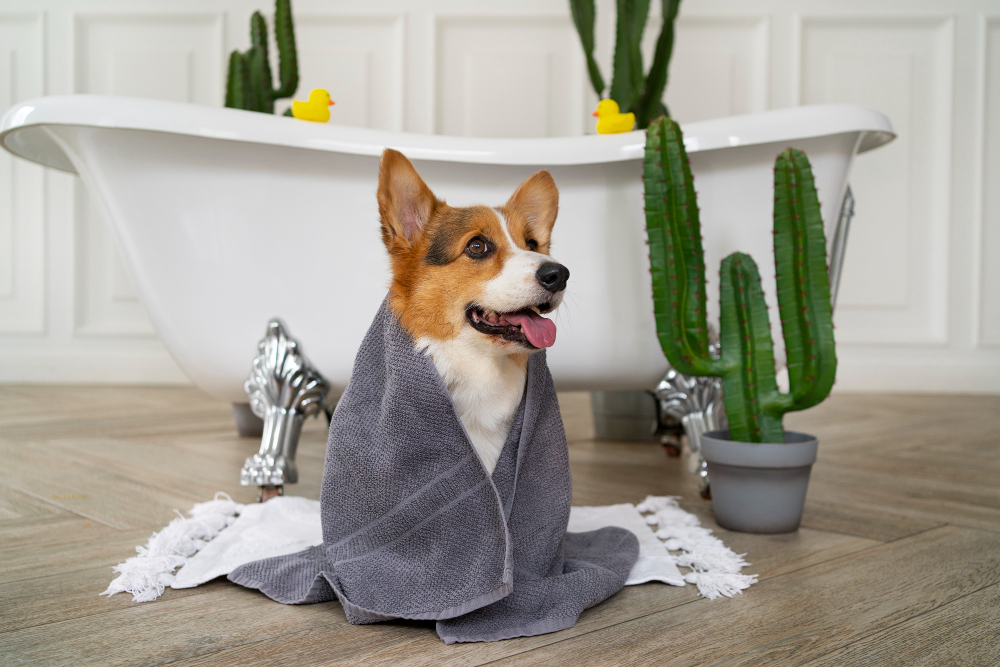

Dog grooming is more than just a necessary maintenance regimen; it's a vital part of caring for your furry friend. Columbus, OH pet owners know the value of a well-groomed pup, from canine health to the aesthetic appeal. Here, we'll cover all the tips and tricks to make your dog look and feel their best, whether you're a seasoned grooming pro or just starting out. This comprehensive guide guarantees to take the stress out of grooming and turn it into a bonding experience your dog will love.
Before you begin, ensure that you have the right tools for the job. A professional dog grooming kit is a worthy investment, including clippers, shears, a comb, a brush, and dog-safe shampoo. Your grooming area should be free of clutter, well-lit, and non-slip to ensure safety. Additionally, ready treats can turn grooming into a positive experience for your dog, especially if they're not yet comfortable with the process.
Brushing should be a regular part of your dog's grooming routine, regardless of their coat type. For dogs with long or curly coats, daily brushing is recommended to prevent matting. Short-haired dogs can benefit from a weekly brushing to remove loose hair and reduce shedding. Not only does this keep your home cleaner, but it also stimulates the skin, distributes natural oils, and gives you an opportunity to check for fleas and other parasites.
Bathing should be done as needed, typically every 4-6 weeks. Too much bathing can strip your dog's coat of essential oils, leading to skin irritation. Use lukewarm water and a dog-specific shampoo to avoid drying out or irritating their skin. Begin by wetting your dog's coat and lathering up the shampoo, starting from the neck and working your way down. Be sure to rinse thoroughly to avoid any leftover soap which might cause itchiness.
Nails that are too long can be uncomfortable and cause your dog to walk improperly. Invest in a quality pair of dog nail clippers and have some styptic powder on hand to stop any bleeding if you cut too close to the quick. If you're new to this, start slow and clip just a small bit at a time to avoid the quick, which contains blood vessels and nerves. Regular trimming will also desensitize the quick over time, allowing you to keep nails at a safe length.
Ear care is often overlooked but is crucial, especially for dogs with floppy ears. Check your dog's ears regularly for any redness, swelling, or discharge, which could signal an infection. Gently wipe away any dirt with a cotton ball dampened with a vet-approved ear cleaner. Be cautious and never insert anything into your dog's ear canal, as you could damage their eardrum.
Mats are clumps of dead hair that have become tangled within the live coat. They can be painful for your dog and lead to skin problems if left untreated. To deal with mats, use a detangling spray or conditioner and work them out gently with your fingers or a comb. Start at the base and work your way up to avoid pulling your dog's hair and causing discomfort.
For breeds that require specific cuts, it's often best to leave this to the professionals. However, regular trimming of the face, paws, and sanitary areas can be done at home with a good pair of shears. Always trim in the direction of hair growth, and be extremely careful around the eyes and earflaps. Keep your dog calm and still by rewarding them with treats throughout the process.
It's essential to keep your dog's safety in mind during grooming. Avoid grooming near power outlets or with electronic devices near water to prevent accidents. Brush thoroughly to remove any mats before bathing, as water can tighten them, making them harder to remove and possibly requiring you to cut them out.
Regular grooming also serves as an opportunity to check your dog's overall health. Look for lumps, bumps, or skin abnormalities, and monitor their coat for changes in texture or excessive shedding. If you notice any issues, consult with your veterinarian.
Once you're done with the main grooming tasks, give your dog a good brush and some love. This helps to distribute the natural oils and leaves your dog's coat shiny and healthy. If your dog is agreeable, this is also a good time to brush their teeth or apply a spray to freshen their breath.
Aftercare is important to ensure your dog's comfort post-grooming. Make sure to dry your dog completely after a bath to avoid skin issues. Also, check ears for irritation and monitor your dog's behavior for any signs of discomfort after nail trimming, such as limping or licking their paws excessively.
While home grooming is a great way to bond with your pet and save on professional fees, there are times when leaving it to the pros is the best option. Professional groomers have the experience and the eye for detail to give your dog the best possible cut and can offer services such as hand-stripping or coat coloring that you might not be able to replicate at home.
For all your dog grooming needs in Columbus, OH, you can trust the experts at Emipet. Book an appointment today, and give your furry friend the pampering they deserve!
In conclusion, dog grooming is an essential part of pet care. With these tips, you can ensure that your dog stays happy, healthy, and looking their best all year round. Remember to be patient, use positive reinforcement, and tailor your grooming routine to your dog's individual needs. With a little practice, you'll become a grooming pro, and your dog will thank you for it!